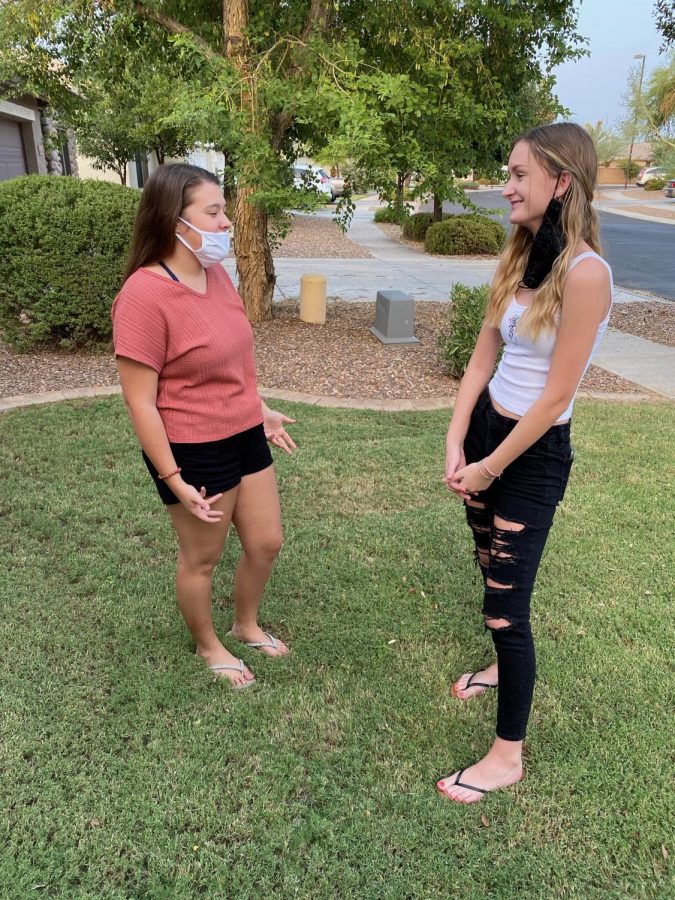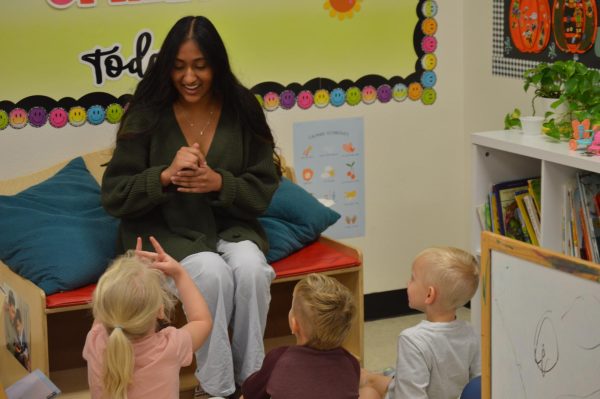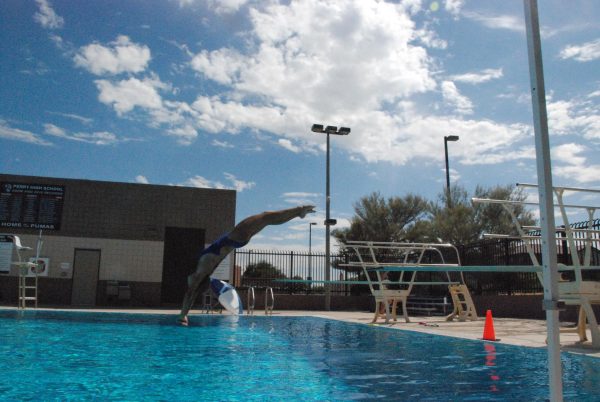Social agenda’s can wait: COVID-19 safety takes priority
Juniors Lauren Ludwig and Mikaela Henriksen wear face masks incorrectly. During the COVID-19 pandemic, wearing face masks correctly became a priority.
Students have been out of school since spring break, and many have had little contact with their peers since the end of the school year. COVID-19 quarantine has left many students yearning for a regular social schedule, but is it safe to officially start school? Is it safe to let students resume in-person schooling, even with restrictions?
Under COVID-19 restrictions, CUSD schools began the school year with online learning and virtual classrooms. Now, elementary and middle schools are allowed to go back sooner than October 13, the day high school is allowed to resume in-person learning. Online school, while not the best option for younger students, is necessary for high school.
With students ranging from 14 to 18, can teachers and staff count on students to wear masks? Many students are reluctant to wear masks for various reasons, for fear of ruining their style or being plagued with mask acne, causing some to disregard the mandate entirely. But for students and faculty with underlying health issues that make them more susceptible to the virus, this choice could lead to unnecessary health complications.
Confirmed COVID-19 cases in Arizona have fallen recently, from around 5,478 on July 1 to just 12 as of September 14, as confirmed by the Arizona Department of Health. Factoring in thousands of students returning to school, many not knowing if they have had contact with someone carrying the virus, or have it themselves, an inevitable rise in cases will occur. When the number of students that test positive reaches a certain level, schools will be closed again, suddenly shifting students back to online learning.
This destructive cycle of sending teenagers back to school, only to pull them out again because of increasing cases, will only limit students’ academic success. Students have already taken a new form of standardized testing, in order to help teachers gauge what lessons need to be retaught. Repetition of lesson material wastes class time that should be devoted to teaching new material and furthering students’ education.
Online learning and virtual classrooms allow high-risk students to participate fully in in-class assignments and projects. For parents and high-risk teenagers, the possibility and consequences of getting the virus outweigh the want for a normal social routine.
A normal social routine is critical to a teenager’s health and mental well-being, but now is not the time to resume in-person school. The risks of spreading the virus are too great and with many social media outlets that teenagers have access to, the need to socialize can adapt to online sources. When it is safe for school to resume, without the worry of an unstable and dangerous learning environment, online school will no longer be necessary, and social schedules can resume as normal.

Lauren Ludwig is a senior and is excited for her second year of newspaper. Her beat this year is the English Department, which she is excited to write...







